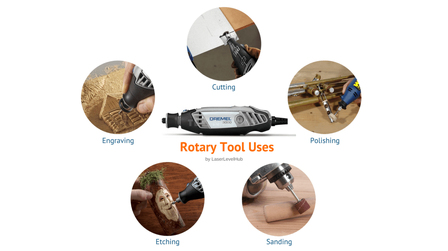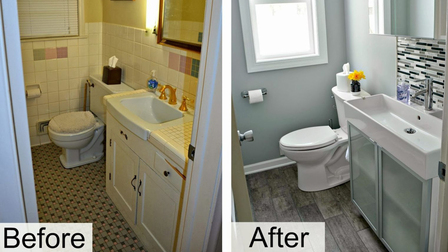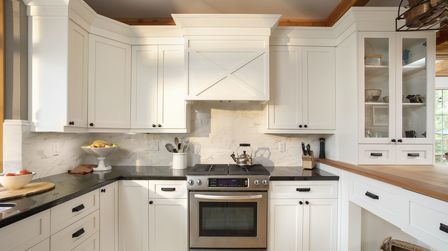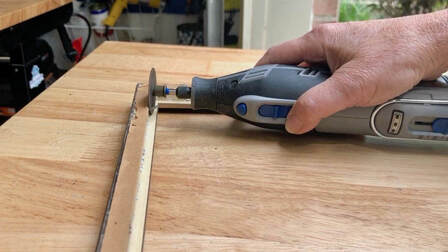Winter is here already, the sensation that comes with it is felt day after day. Somehow, winter brings us closer to our family, don't you think so too?
However, even at that, numerous problems are evident in this season, especially in our homes. The house becomes cold, and it seems so hard to get as warm as we require most times.
The tiles, floor, windows, tables and other house appliances even feel winter if I can say. In fact, my pipes are not left out; they sometimes froze too during this season.
I am sure the question on your mind now is how to keep your house warm and comfortable during winter to avoid health issues that accompany this season.
If you have difficulties in keeping your home warm or wish to learn other effective ways to combat the chills of winter within your home, you are in the right place.
I have figured out some tested and true methods which I am going to share with you in this article.
Now, relax and pay attention as I bring you some amazing tips to keep your house warm this winter.
1 - Get Snow Off Your Roof To Ensure Proper Insulation
During the winter, it is important to ensure that your house is properly insulated to keep it warm. One of the ways to achieve this is by removing the snow from your roof.
Too much snow on a roof can result in the formation of the ice dam that causes leakages, and roof damages. It can even collapse the roof, and this would obviously be a terrible situation.
Thus, removing snow from your roof will not only help to minimize heat loss but also prevent costly damages caused by the heavy snow load.
How To Clear Snow Off Your Roof
Clearing snow off your roof might seem a pretty difficult task, but with the right approach, you will remove the snow safely and efficiently.
Below are some efficient ways to remove snow from your roof.
#1 - Install Heat Cables
Installing heat cables is a great way to remove or prevent snow from piling up on your roof. Following a major snowstorm, all you have to do is to switch on the heat cables to melt off the ice on your roof.
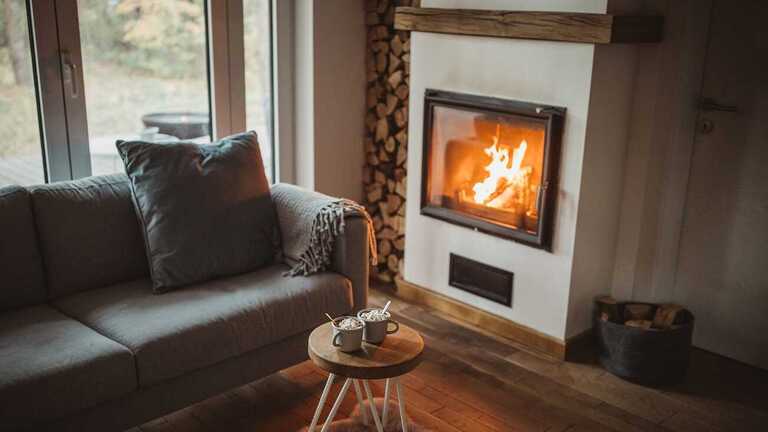 photo source: paulselectricservice.com
photo source: paulselectricservice.comHowever, this option is quite expensive to run and install. Moreover, it uses a ton of electricity and might significantly raise your energy bill.
This option might not be ideal for people who want an inexpensive way of clearing snow off their roofs.
#2 - Removing Snow From Your Roof With A Roof Rake
This can be an excellent way of removing the snow from your roof while standing on the ground.
Some roof rakes come with rollers to protect shingles and can be connected to an extension pole to reach higher on your roof.

To remove snow with a roof rake, you have to:
Step 1: Prepare your gear. Buy a roof rake like the Avalanche or True Temper if you have none.
Step 2: Get properly dressed. Put on slip-resistant footwear and add multiple layers of clothing to ensure your comfort and protection against the cold.
If you start sweating while removing the snow, remove a layer of your clothing.
Step 3: Attach the extension pole to reach higher on your roof. Gently move the rake over your roof starting from the edges to clear the overhangs before working your way into the roof.
#3 - Other Tips For Removing Snow On Your Roof
- You can also use melting or de-icing products to clear the snow. But you need to make sure you use the product that will not damage your roof membrane.
- Clear the accumulation of the drain spouts and gutters to ensure proper drainage when the ice begins to melt.
- Take note of the vents and pipe location when removing snow to avoid damaging these structures.
- If you cannot handle this task, hire a professional residential snow remover to remove the accumulation safely and efficiently.
2 - Prevent Heat Loss Through Your Fireplace
Although your fireplace is a source of heat, it can be a heat-drain if you do not maintain or manage it properly.
Do not allow the heat generated by the flames in your fireplace go up in smoke. You need to harness it to keep your home warm and comfortable.
You can make your fireplace more efficient by following these tips:
#1 - Buy and install a glass front to improve safety while preventing heat loss
 Heatilator Fireplace Doors
Heatilator Fireplace Doors#2 - Shut the flue to prevent heat loss via the chimney when you are not burning firewood
#3 - Take advantage of a fireplace blower to circulate heat around your home
#4 - Perform proper inspection and chimney sweep at least once in a year or after about 50 fires. This will help to detect the fault and prevent a chimney
#5 - If you are not using your fireplace, you can use a chimney balloon or fireplace inserts to prevent heat loss.
 Chimney Balloon 30"x12" Inflatable Blocker
Chimney Balloon 30"x12" Inflatable Blocker To use a chimney balloon, simply insert it into the chimney hole and inflate it until it completely shuts the escaping heat or the incoming cold air.
3 - Install A Programmable Thermostat To Improve Your Energy Efficiency
Installing a programmable thermostat is a great way to keep your house warm and your energy bills low.
With a programmable thermostat, you can easily regulate the heat without having to manually fiddle with your thermostat each time you leave for work or come back home.

It will help to regulate the temperature of your home according to your heat preferences or temperature schedule.
Below is an example of what a temperature schedule looks like:
- 6 a.m. to 9 a.m. (early morning, as you prepare for work) = 68 degrees
- 9 a.m. to 5:30 p.m. (while you are away from your home) = 60 degrees
- 5:30 to 11 p.m. (when you come back home from work until you sleep) = 68 degrees
- 11 p.m. to 6 a.m. (while you are sleeping) = 60 degrees
- When you go on vacation for a few days = 55 degrees
Keep in mind that you can adjust your thermostat according to the temperature that’s comfortable for you.
However, research has shown that cooler temperature may improve metabolism and promotes better sleep.
How To Install a Programmable Thermostat
You can install a new programmable thermostat yourself. All you need to do is to buy the type that suits your needs and follow the manufacturer's instruction.
- Remove the old thermostat and disconnect the wire leads that are connected to the terminals at the back of the thermostat.
- Connect those wires to the terminals of your new thermostat and insert the mounting screws in the wall if it is required.
- You will probably find two leads for your Air Conditioning and another two leads for your heating units if they are separate units but uses the same thermostat.
- Make sure you replace the battery when it runs down.
4 - Seal The Leaks To Keep The Cold Out
Since you want to keep the freezing air outside and the warm air inside, you can achieve this more successfully by sealing all the leaks around your home.
You might not think that a little draft here and a crack there is a big deal, but fissures can make you spend a lot more than required on heating bills.

Some of the areas you need to check and seal up are:
- Basements
- Around your windows
- Attics
- Electrical outlets
- Under your doors
#1 - Select the caulk or sealant that suits your need and get your tools (like your rubber gloves, caulk gun, scaffolds or ladder) ready.
#2 - Test or examine your home to detect cracks and air leakages. You can hire a professional to conduct an energy audit to detect leakages if you are not comfortable doing it yourself.
#3 - Caulk and weatherstrip the windows and doors that leak air.
Seal the air leaks by caulking the leakages where the electrical wiring, ducting or plumbing comes through ceilings, floors, walls, and soffits over cabinets.
#4 - Look for dirty spots on your carpet and ceiling paint that may indicate leakages at the interior wall/floor joists and wall/ceiling joints, and caulk them.
#5 - Install switch plates on walls and foam gaskets behind outlets
#6 - Replace single-pane windows with more efficient double-pane low-emissivity windows or cover them with storm windows.
If there are larger gaps around the baseboards, windows and other places air may leak out, seal them off using foam sealant.
#7 - Cover the exhaust fan of your kitchen to prevent leakage when not in use.
#8 - Use fire-resistant materials such as sheetrock or sheet metal and furnace cement caulk to seal air leaks around the gas-fired water heater vents, furnaces, and fireplace chimneys.
5 - Use A Space Heater To Heat Up Your Room
If you want to spend some amount of time in certain rooms of your home, a space heater might be the best way to go. Space heaters are specially designed for heating an enclosed area.

You can take advantage of a space heater to keep yourself warm and comfortable during the cold winter periods without necessarily spending more than you can afford on energy bills.
To use this method, start by:
#1 - Purchasing a space heater that suits your need. For your safety, go for products with “UL” mark on their label. Make sure you read the manufacturers guide before you operate the device
#2 - Close off other rooms before switching on the device
#3 - Move anything that can burn such as your curtains, furniture, and bedding at least 3 feet away from your space heater
#4 - Do not leave your space heater on for a long period of time. Switch it off before leaving the room or when going to bed
#5 - Do not use oil-burning or gas space heaters indoors.
6 - Change the Direction of Your Ceiling Fan to Push Down the Heat
During the winter months, your ceiling fans may be sitting needlessly dormant. Many fans come with a “winter” settings that make them spin clockwise rather than anti-clockwise.
Warm air rises naturally and gets trapped up at the ceiling. Simply reversing the direction of your ceiling fan helps to push the heat back down into your room.
This often overlooked winter trick also promotes heat circulation inside the room, and it is particularly recommended for homes with sloped or high ceilings.
Some professionals do not believe in the efficacy of this method as the fan may end up cooling the air too much. But you can try it with a low speed to see if it warms your room.
I have tried this severally, and it works. Follow the steps below to reverse the direction of your ceiling fan.
#1 - Shut your ceiling fan off and wait for the blade’s movement to come to a complete stop
#2 - Use a step stool or scaffold ladder to reach the fan’s motor housing
#3 - Find the direction switch and flip it in the opposite direction
#4 - Climb down the ladder or stool and switch on the fan
#5 - Verify the blades are rotating towards the right direction
7 - Reflect The Heat Back Into Your Room With A Radiator Reflector Foil
Using a heat reflective aluminum foil behind your radiator is one of the effective ways to prevent unnecessary heat loss from radiators, especially on those attached to the exterior walls.

Placing the reflective foil behind your radiator can help to prevent up to 50% heat loss. The aluminum foil prevents heat from escaping through the wall by reflecting it back into your room.
You can find the Superfoil and other products that are specially designed for this purpose under $30.
You can equally use kitchen foil with outstanding quality although it might not be as effective as an aluminum foil.
Follow the steps below to place the foil behind your radiator:
#1 - Get a piece of lauan (luan) or plywood, make sure it is bigger than your radiator.
#2 - Measure, mark and cut the luan to a size that is slightly bigger than your radiator. You can use a jigsaw or an oscillating tool to easily cut the wood
#3- Measure and cut the foil. Make sure it is about an inch larger than the luan on all sides
#4 - Add some glue to the luaun starting from the middle to all around its edges
#5 - Attach the foil to the luan. Use your hand to smooth it out, then turn it over. Use your utility knife to cut off the overhanging foil.
#6 - Place this panel behind your radiator and drill some holes (the correct size of the anchor wall screw you want to use) into the walls through the panel.
#7 - Insert the screw anchors and then screw the panel with large washers on them to secure it to the wall
8 - Bleed Your Radiators To Get Them Working Effectively

A season or two without using your radiator can reduce its efficiency, which means it might not heat up properly to keep your home warm.
However, resolving this issue is not difficult, and you can even fix it yourself. If your radiators are not heating at the top or have cold spots, it probably means that air is trapped at the top and are stopping the hot water from rising.
Then you need to bleed your radiators to release the trapped air and get them working effectively.
Follow the steps below to bleed your radiator:
#1 - Turn your central heating off to avoid spraying out boiling water when you bleed your radiator
#2 - Get your tools ready. You need a radiator key (you can get this at most DIY shops), a bowl to catch water and a dry towel
#3 - Locate the square bleed screw. Place the bowl directly under the bleed screw, just below the radiator
#4 - Place your radiator key on the bleed screw and turn it slowly in the anti-clockwise direction for about half a turn. You will hear a hissing sound as the air escapes.
Now, hold the towel or a piece of cloth close to stopping the water from spitting or spraying onto the radiator.
#5 - The moment the hissing sound stops and the water start trickling out, fasten the screw and be careful to avoid damaging the valve by over-tightening the screw.
Wipe off the moisture on the radiator, leaving any moisture behind could lead to rust.
#6 - Switch on the heating and check to be sure that the radiator is working perfectly and that the bleed valves are not leaking.
If the issue is not resolved, you can bleed the radiator again or contact a heating engineer for repairs.
9 - Keep Your Door And Window Closed To Stop Drafts And Heat Leaks
Make sure your doors and windows are properly closed and sealed.
Check your windows for aggressive and windy cracks and seal off the cracks with a removable caulk. You can equally seal the cracks with a plastic tape if you have no caulk.

For doors, try making draft stoppers or door snakes. You can also roll up a towel or a piece of cloth and place it at the bottom of the door to prevent heat leaks and stop drafts.
These options can be inconvenient, especially when the door is frequently used. You can equally buy door sweeps to seal the gaps at the base of your door.
Use keyhole stopper and weather stripping on the sides and top of the door to seal out the cold.
10 - Cook Some Food And Allow The Heat To Warm Up Your Home
Winter is the perfect time to avoid junk foods and cook some comfort meals. When you cook during the winter periods, you will not only warm up your home but will also enjoy eating a nice meal that will keep you warm afterward.
After baking or roasting your meals, open your oven door to let out the heat. Leave it open for about 15 to 20 minutes.
However, you have to be careful enough to stop your kids from playing with the oven.
Try to avoid cooking meals that give off much steam. This is because steam will increase the moisture content (humidity) of the air around your home.
Humid air feels colder because of its greater ability to absorb heat than the dry air. Thus, your best bet during winter periods is to reduce humidity around your home.
11 - Prevent Heat Loss With Curtains
One of the tested and true ways of protecting a home from losing heat through the windows is by using a curtain.
By simply closing your curtains, you obstruct the movement of warm air out of your home through the windows.

However, it is important to know that the thicker the curtain, the better the protection it provides against heat loss. If you don’t want to spend too much money on a new curtain, you can line with thermal lining materials or materials like fleece.
Curtains are not limited to windows; you can also place them in front of your door to beautify your home and add a layer of protection.
You can also open your curtains to allow the sunshine to heat up your home during the day for you to utilize the natural heat.
When the nighttime approaches, shut your curtains so that the warm air can stay in and the cold house, out.
12 - Cover Your Floor With A Rug Or Carpet To Prevent Heat Loss Through Your Floor

Adding a rug or carpet to your (wood, stone, tile, stone or concrete) floor helps to insulate the floor and prevent heat loss.
Typically, floors account for something as high as 10 percent of a home’s heat loss if they are not insulated. Adding rugs or carpet to your floor will help to mitigate this thus, keeping the house warm and cozy.
If there are gaps or cracks in your flooring, it would be a nice idea to fix it by filling the gaps before you roll a rug or carpet over the floor. Covering your bare floorboards with a rug or carpet can be an easy DIY task.
- Simply purchase a rug or carpet that suit your need (take the size of the room you want to cover into consideration)
- Remove your furniture (you can move them temporarily to other rooms)
- Clean the dirt off the floor and roll over the carpet or rugs
- Readjust the furniture, and you are good to go.
13 - Close Unused Rooms To Improve Your Energy Efficiency
If you stay in a large building, closing off the unused rooms is a good move at improving your energy efficiency. This is because larger homes are more expensive to heat.
If you have a storage space or an empty guest room, shut the door and seal it with a door snake, door sweep or a draft stopper.
Shutting the door of your rooms will not only stop the movement of cold air into the rest of the house but will also help you contain the heat you have generated.
You will even save yourself the money and the hassles of heating up a room you don’t use.
14 - Insulate Water Pipes To Prevent Heat Loss And Freezing
It's time to pop on some pipe lagging, now that the weatherman says the weather is really about to get cold. And just as I said before, the winter days might cause your pipes to freeze.

Water expands as its temperature decreases and freezes, and this can lead to burst pipes.
Insulating the pipes will not only help to prevent freezing but also help to keep the water in your hot water pipes hot for longer periods of time.
The steps below will help to insulate your pipes properly
- Buy pipe lagging or insulator from a DIY store closest to you
- Peel away the backing strips and lag the exposed pipes with the foam-rubber pipe insulator
- Press the adhesive surface together to secure the foam insulator to the pipe
- Cut the end of the insulator with scissors at pipe corners, then use foam tape to secure the corner joint.
- If a pipe is frozen, open the faucet before you attempt to thaw
- Find the ice blockage, and use a blow dryer or heat gun to thaw the frozen area. Do not use open flames or propane torch.
15 - Weatherstrip Your Doors To Make Them Draft-Free
Your door weather seals can bend, compress, rip or wear out over time, leaving the expensive warm air to leave and the cold winter air free to enter.
Fortunately, this issue can be corrected by attaching new weather seals which is even faster and cheaper than installing a new door.
The two different kinds of weatherstripping required are:
- Foam tape for the sides and tops
- Door sweeps for the bottom
A good weatherstripping takes the expansion and contraction of the door into consideration to install a seal that would remain effective in all kinds of weather.
Follow the steps below to weatherstrip your doors
Step 1 - Measure The Gap
Start by closing the door to measure the gap between the stop and the door as well as the gap between the jamb and the door.
Do this before you order weatherstripping. Make sure you select durable materials that suit your need.
Step 2 - Cut a Groove
Open the door and place the V-shaped base of the grooving tool into the corner formed by the stop and jamb, turn on the tool and push it up to the head jamb.
This cuts a groove (3/16 inch deep and 1/8 inch wide) to create a slot. Make sure the slot is not too wide to grip the weatherstripping.
Repeat this process on the head jamb and the opposite side of the jamb.
Tip:You can use an oscillating tool with the right cutting blades (which is more versatile and more popular than a corner grooving tool) to quickly cut a groove along the door.
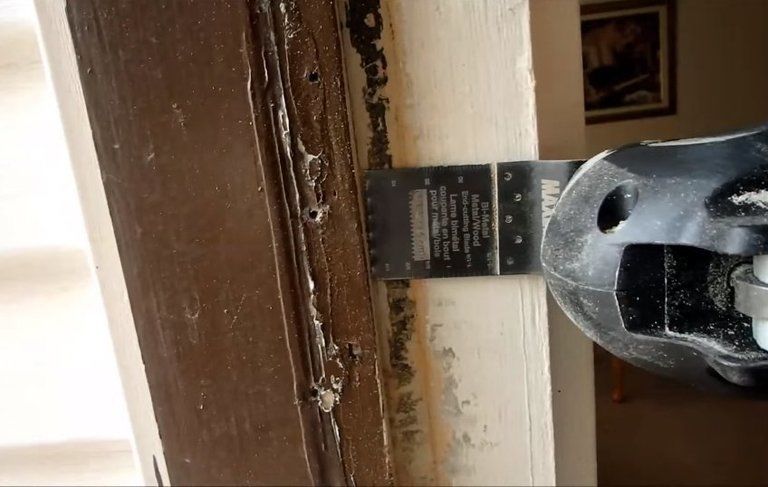
Step 3 - Attach The Weatherstripping
Cut the weatherstripping to length and insert it by pushing its barbed tongue into the slot. Do so until the entire strip is secure.
Avoid stretching the weatherstripping to avoid leaving gaps behind. Close the door from the outside and check for gaps.
Step 4
Close the door. Cut the sweep to length and screw it to the door so that it touches the floor.
Conclusion
Keeping your home warm and efficient during winter is often a challenge. But with the tips above, keeping your home warm and comfortable would be a breeze.
Take advantage of these tips and beat the cold before it beats you! If you find this post helpful and resourceful, feel free to share.


